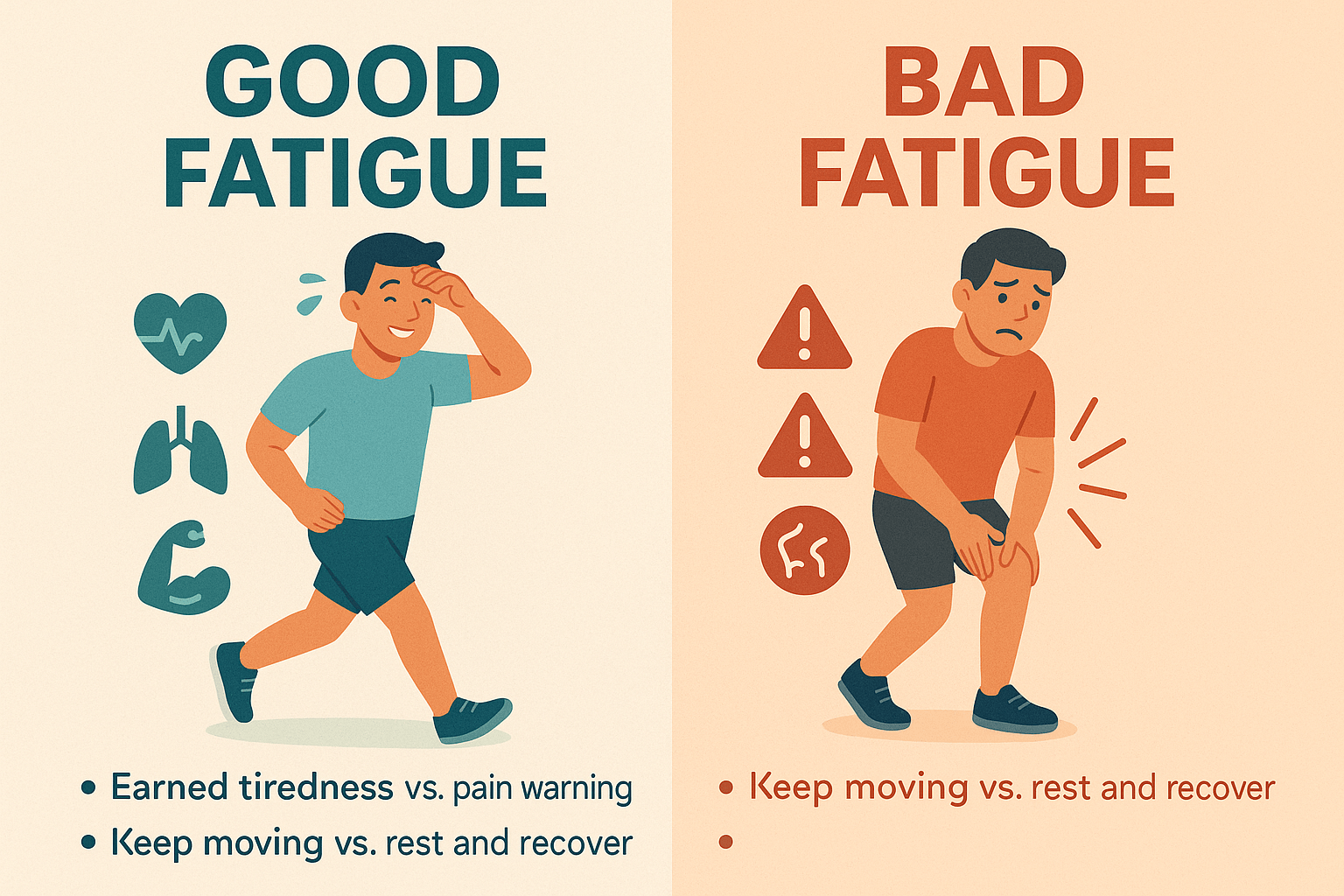Starting to run felt like stepping into a whole new world for me—equal parts exciting and totally overwhelming.
I remember my first week thinking, “How far should I even run without wrecking myself?”
If you’re new to running, here’s my best advice: forget miles for now.
Focus on time. Aim for 20-30 minutes, 2-3 times a week, mixing walking and running to build your stamina without burning out.
In this guide, I’ll walk you through why the first week always sucks a little, how to tell the difference between good and bad fatigue, and why consistency beats speed every time.
I’ll also share how to recover smartly so you don’t get sidelined, when and how to gradually step up your runs, and why slowing down now sets you up to run longer later.
Let’s get to it.
Running Sucks At First Your first week of running?
Yeah, it’s gonna suck. Your legs will probably feel heavy, and you might wonder if it’s worth it halfway through.
But that’s completely normal.
At the start, it’s less about speed and more about allowing your body to adjust to running. Your muscles, tendons, and even your mind are getting used to something new.
The key is recognizing the difference between ‘good’ fatigue and ‘bad’ fatigue.
- Good fatigue is the kind where your legs feel tired, your lungs are working, and you’re sweating, but it feels earned
- Bad fatigue is when you’re in pain or your body’s telling you to stop. Sharp pain or strain, particularly in your knees, hips, or lower back, is a warning sign.
Running through pain can lead to injury, so it’s important to listen to your body.
It’s essential to listen to your body.
Start Slow: It’s About Time, Not Distance
Let’s talk about the biggest mistake new runners make: doing too much too soon.
You’re excited, you’ve got the gear, and you’re ready to crush it. But here’s the truth: running too far, too soon, only leads to burnout and injury.
It’s way better to start small and build up than to push yourself hard and crash out.
When I first started, I thought I could nail a 5K right off the bat.
Many beginners make the mistake of thinking they can handle a 5K right away.
I barely made it through one mile without needing a break. It wasn’t until I focused on time, not distance, that I started making real progress.
My best advice? Start with 20-30 minutes of running, but break it up.
Run/walk intervals are your best friend. Try running for 60 seconds, then walking for 90 seconds. Repeat that for the whole session.
Don’t feel guilty about taking it slow. That’s how you build the stamina to keep going without wrecking your legs.
Set a Time Goal, Not a Distance Goal
Let’s cut through the noise here—forget about distance for now.
If you’re just starting, chasing miles is a recipe for frustration.
Focus on time. Aim for 20-30 minutes of movement, mixing in running and walking. Your body will figure it out. I get it—when I first started, I was obsessed with hitting a certain distance.
Stick with it. You’ll be amazed at how quickly your body adapts. Soon, you’ll be running longer without even thinking about it. But for now? Keep it simple and just get the time in. The rest will follow.
How to Handle the First Week As A Runner
Wondering how much you should run in your first week?
Let’s keep it simple to avoid overdoing it:
- Start with 20-30 minutes, 2-3 times a week. Don’t stress about distance—just focus on time. Move at your own pace, alternating between walking and running as you feel.
- Rest is key. Give yourself at least one rest day between runs. If you’re itching to move, go for a walk or do some light stretching. But don’t push it.
- Your body is adapting, so let it rest. Focus on effort, not speed. When you’re running, aim for a pace where you can still talk without gasping for air. If you’re too out of breath to get a full sentence out, slow down.
When to Progress? Don’t Rush It
Alright, you’ve made it through your first week, and now you’re probably thinking, “When can I run farther?” Here’s the deal: progress isn’t about rushing through the miles. Seeing results from running takes times.
Once you’re comfortable running for 30 minutes, then you can start increasing your distance—but don’t go overboard.
So what should you do? Simple. Don’t jump from 2K to 5K in one shot. Gradually increase your distance—around 500 meters at a time.
For example, if you’re running 3K in 30 minutes, push it to 4K next. Give your body time to adjust. Don’t rush into that 5K until it feels like a natural next step. Once you can run a 5K in 30 minutes, then shoot for a faster time – so on and so forth.
The Power of Consistency
This is the big one: consistency. It’s not about trying to do everything at once. It’s about building the habit.
Running one day, resting the next, and running again the day after—that rhythm? That’s your best friend.
At first, it won’t feel like you’re sprinting toward progress, but trust me, if you stick with it, you’ll get stronger, faster, and more confident over time.
Week by week, you’ll start noticing the improvements, and before you know it, you’ll be running longer without even thinking about it.
Small, steady progress—that’s the name of the game.
What to Do If You’re Feeling Tired After Your First Run?
Feeling wiped out after your first few runs? Totally normal. Your body is just figuring it all out.
Here’s how to recover like a pro:
- Sleep – It’s simple, but it’s crucial. Make sure you’re getting enough rest to let your body rebuild and repair.
- Hydrate – After your run, drink water and replenish those electrolytes. Don’t go overboard with sports drinks just yet—plain water is usually all you need.
- Stretch – Spend a few minutes stretching your legs, calves, hamstrings, and quads. It doesn’t have to be a deep stretch, just enough to loosen up. Trust me, it makes a huge difference in reducing soreness.
- Active Rest Days – Don’t just sit around. Go for a light walk or swim to keep your body moving and blood flowing. Your muscles will thank you.
- Fuel Right – Refuel with a carb-protein snack within 30 minutes of finishing your run. This helps kickstart recovery and keeps you feeling strong for your next workout.
How Far to Run on Your First Week: Quick Tips
- Start slow—aim for 20-30 minutes, 2-3 times a week.
- Focus on time, not distance.
- Mix running with walking to build stamina.
- Gradually increase your distance once you’re comfortable.
- Listen to your body and rest when needed.
Conclusion: Keep It Slow, Keep It Steady
The goal in your first week is simple: get out there, move, and stay consistent. Forget about chasing miles and focus on the rhythm of the run.
Listen to your body, take rest days seriously, and know that every step you take is getting you closer to your running goals.
Thank you for dropping by.
Pls let me know if you have any questions
David D.



